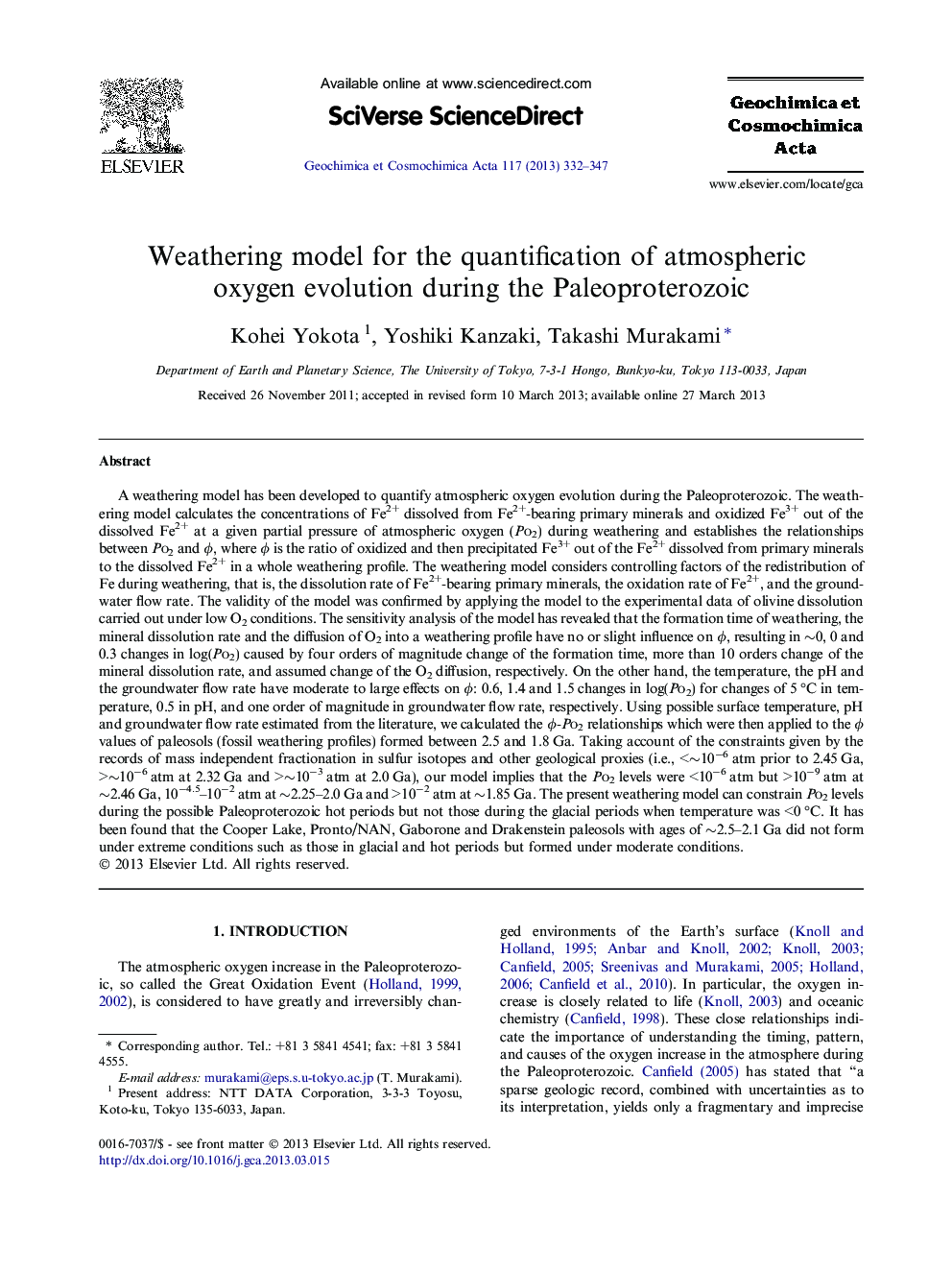| Article ID | Journal | Published Year | Pages | File Type |
|---|---|---|---|---|
| 4702376 | Geochimica et Cosmochimica Acta | 2013 | 16 Pages |
A weathering model has been developed to quantify atmospheric oxygen evolution during the Paleoproterozoic. The weathering model calculates the concentrations of Fe2+ dissolved from Fe2+-bearing primary minerals and oxidized Fe3+ out of the dissolved Fe2+ at a given partial pressure of atmospheric oxygen (Po2) during weathering and establishes the relationships between Po2 and ϕ, where ϕ is the ratio of oxidized and then precipitated Fe3+ out of the Fe2+ dissolved from primary minerals to the dissolved Fe2+ in a whole weathering profile. The weathering model considers controlling factors of the redistribution of Fe during weathering, that is, the dissolution rate of Fe2+-bearing primary minerals, the oxidation rate of Fe2+, and the groundwater flow rate. The validity of the model was confirmed by applying the model to the experimental data of olivine dissolution carried out under low O2 conditions. The sensitivity analysis of the model has revealed that the formation time of weathering, the mineral dissolution rate and the diffusion of O2 into a weathering profile have no or slight influence on ϕ, resulting in ∼0, 0 and 0.3 changes in log(Po2) caused by four orders of magnitude change of the formation time, more than 10 orders change of the mineral dissolution rate, and assumed change of the O2 diffusion, respectively. On the other hand, the temperature, the pH and the groundwater flow rate have moderate to large effects on ϕ: 0.6, 1.4 and 1.5 changes in log(Po2) for changes of 5 °C in temperature, 0.5 in pH, and one order of magnitude in groundwater flow rate, respectively. Using possible surface temperature, pH and groundwater flow rate estimated from the literature, we calculated the ϕ-Po2 relationships which were then applied to the ϕ values of paleosols (fossil weathering profiles) formed between 2.5 and 1.8 Ga. Taking account of the constraints given by the records of mass independent fractionation in sulfur isotopes and other geological proxies (i.e., <∼10−6 atm prior to 2.45 Ga, >∼10−6 atm at 2.32 Ga and >∼10−3 atm at 2.0 Ga), our model implies that the Po2 levels were <10−6 atm but >10−9 atm at ∼2.46 Ga, 10−4.5–10−2 atm at ∼2.25–2.0 Ga and >10−2 atm at ∼1.85 Ga. The present weathering model can constrain Po2 levels during the possible Paleoproterozoic hot periods but not those during the glacial periods when temperature was <0 °C. It has been found that the Cooper Lake, Pronto/NAN, Gaborone and Drakenstein paleosols with ages of ∼2.5–2.1 Ga did not form under extreme conditions such as those in glacial and hot periods but formed under moderate conditions.
